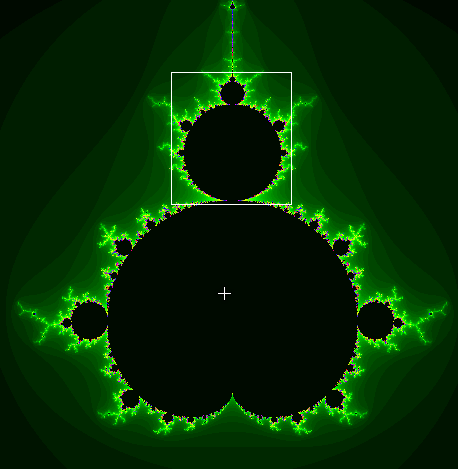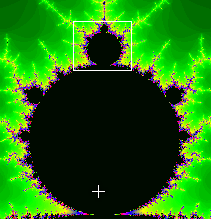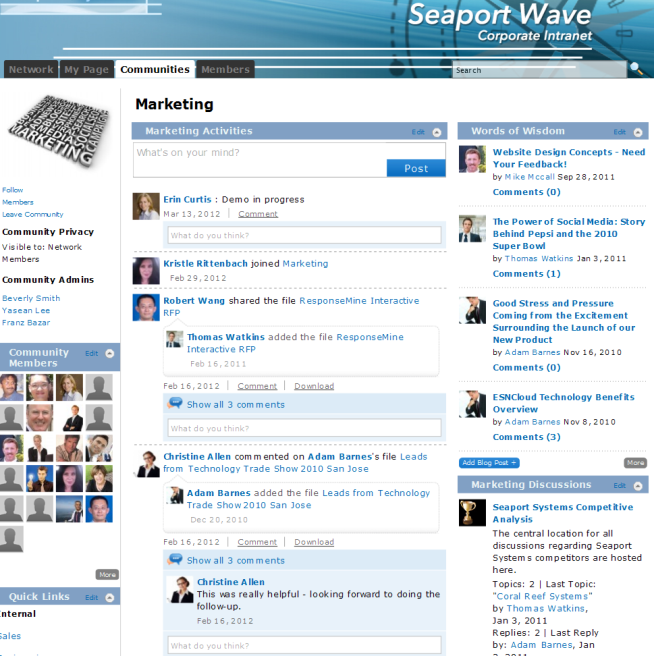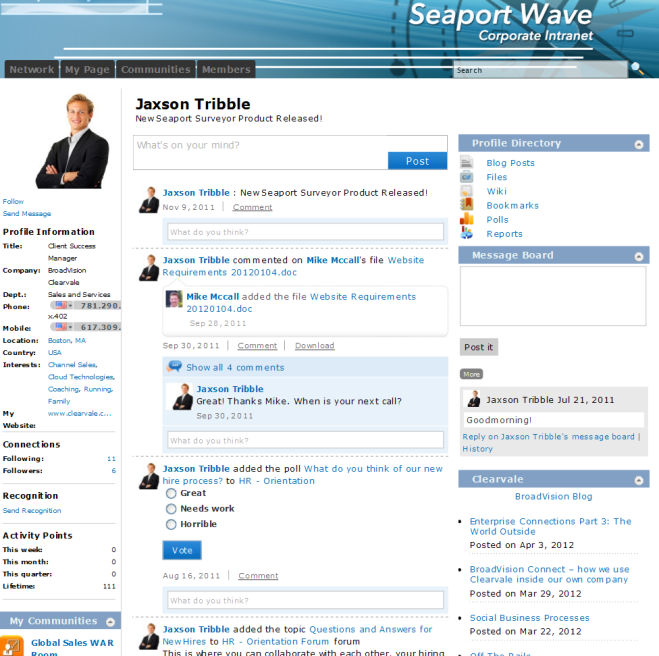I’d like to take a quick break from the Enterprise Connections series to focus a revelation I had early on in my career at BroadVision. The issue of understanding what an enterprise social network is often made more complicated then it needs to be. The fact that the same words tend to be used for different things, depending on who you talk to, certainly doesn’t help. We look at use cases and customer cases studies, reports about ROI and many other things that can be very helpful, but only if you have a basic understanding of what an ESN is and how it should function.
It didn’t take me long to “get” Clearvale because it reminded me of fractals.
Remember fractals? (If not)
You look at a fractal and see patterns:
Then you zoom in and see the exact same patterns:
You keep zooming in, but the patterns remain:
I’ve always looked at our internal Clearvale network (see video here) as being similar to a fractal. The below images are from a demo network but if you watch the video, you’ll see what our actual network looks like.
You start with the whole network, which includes everyone, has an activity stream, houses files, blogs and wikis, all of which are relevant to the entire network:
Zoom in a little, and you see communities, which exist in the network but are organized around something specific, such as a department, project or product. They have the same pattern; activity stream, files, blog, wiki, etc., all of which are relevant to the entire community:
Zoom in further, and you have the profile page with the same pattern, but everything is relevant to that particular profile:
It’s all very neat and tidy, and it helps (for me anyway) dictate where things go. Everything (with some exceptions) goes into the network, but only things relevant to marketing go into the marketing community. All marketing materials go into the marketing community, but only the ones that I wrote are stored in my profile.
The point is, you only need to get a handle on the pattern once.






